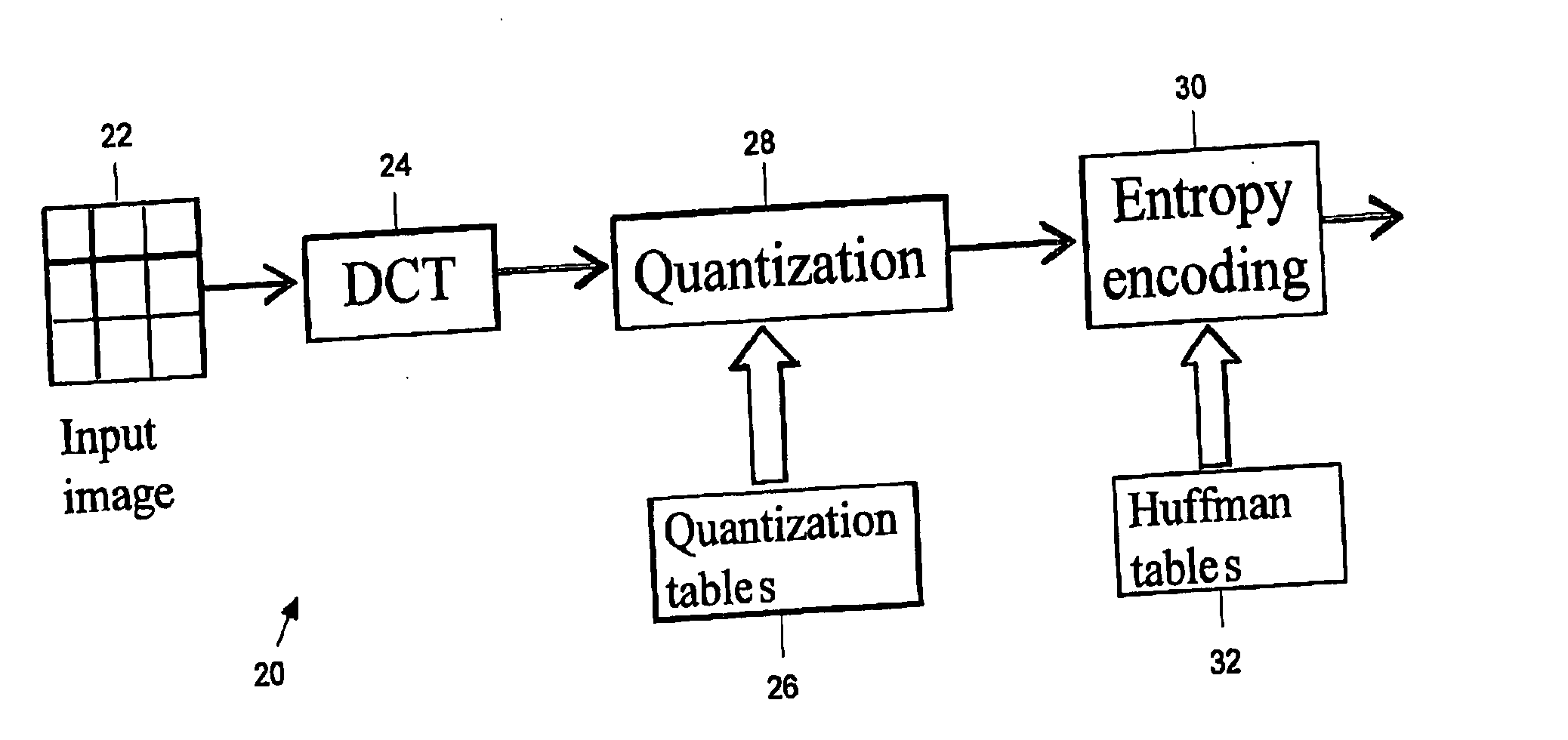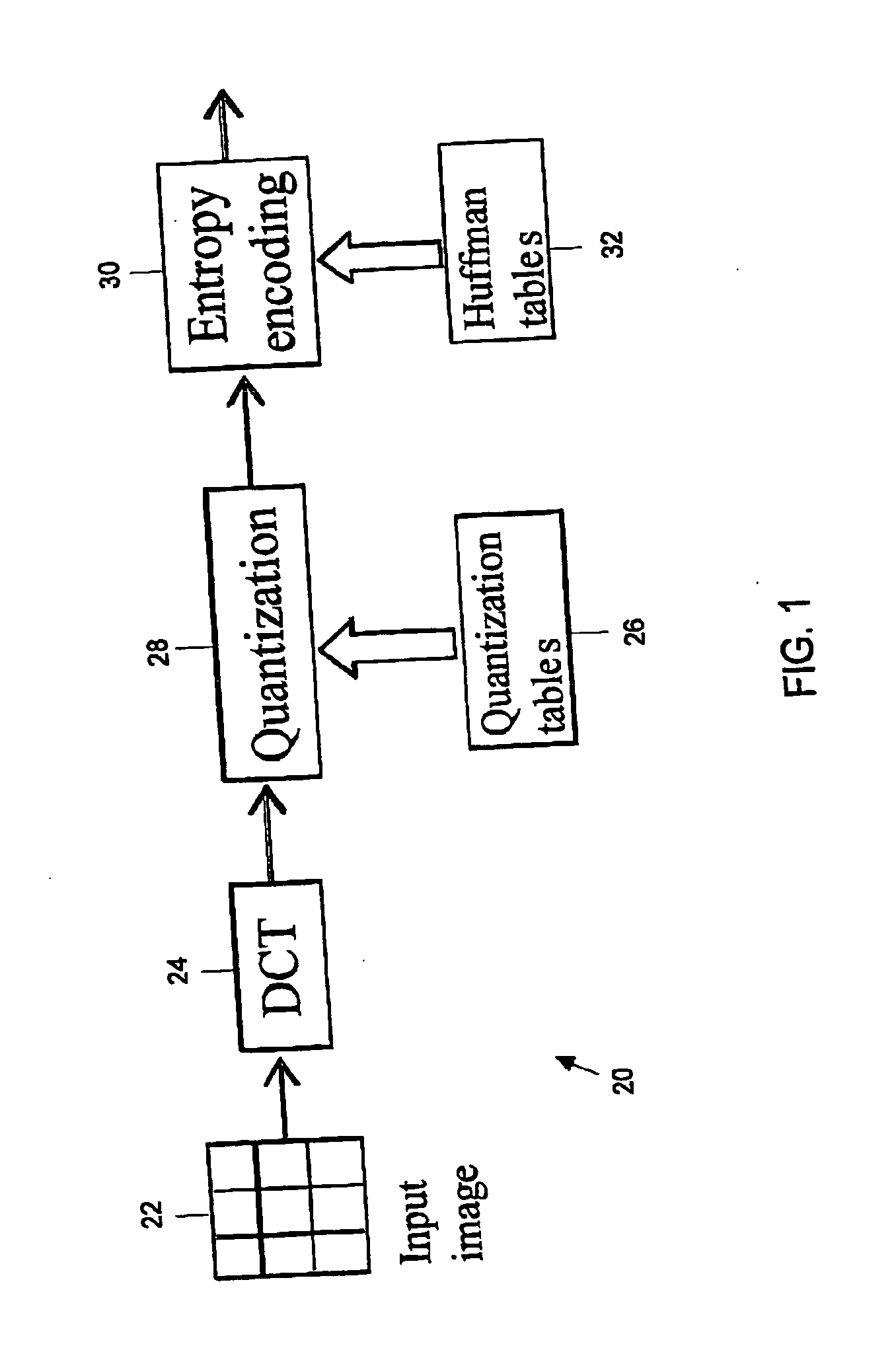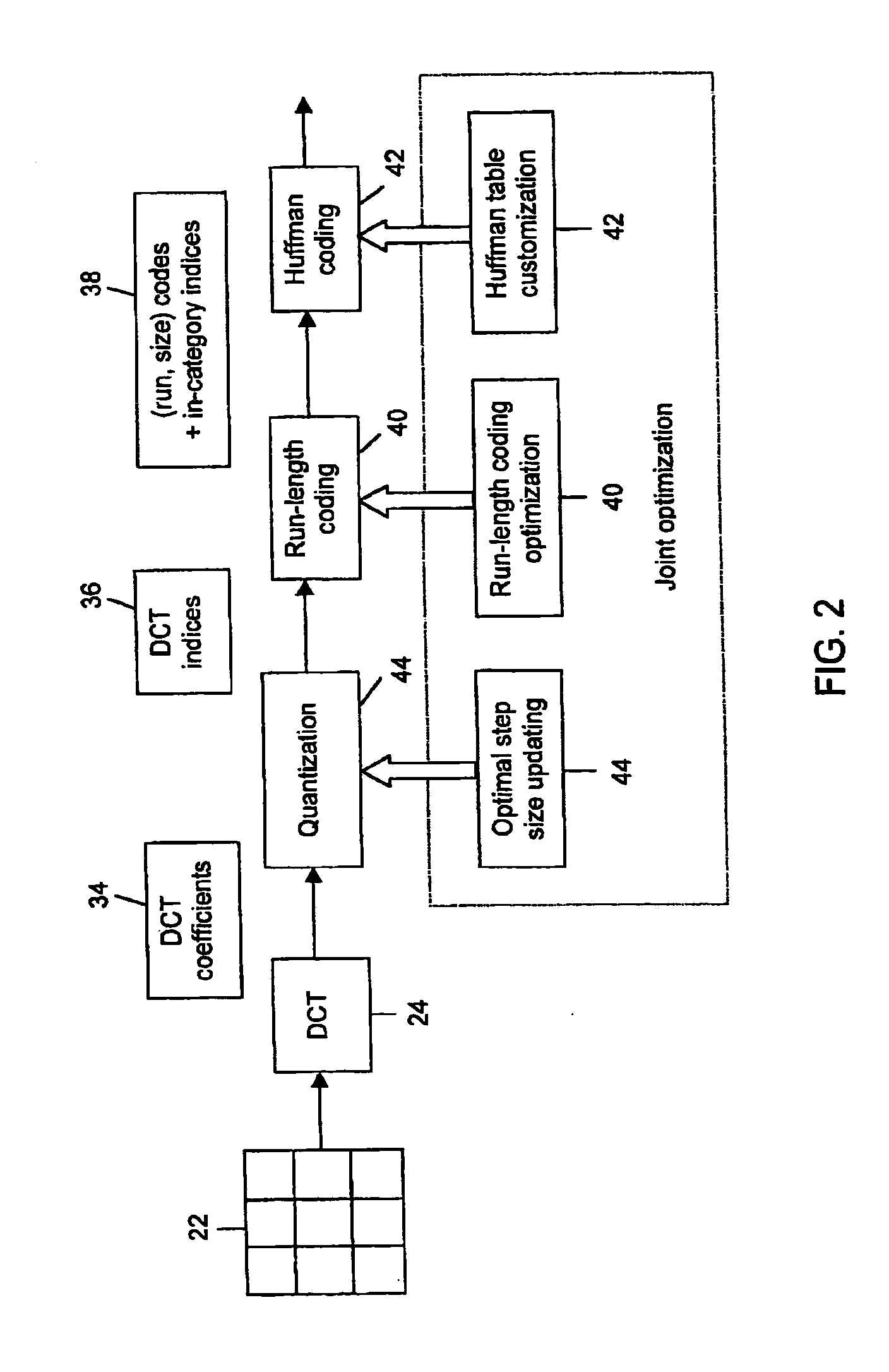[0027] In accordance with a fifteenth aspect of the invention, there is provided a computer program product for use on a computer system to compress a sequence of n coefficients by jointly determining an output quantization table, a cost-determined sequence of coefficient indices represented by a cost-determined sequence of (run, size, ID) triples, and a run-size distribution, wherein each sequence of (run, size, ID) triples defines a corresponding sequence of coefficient indices such that (i) each index in the corresponding sequence of coefficient indices is a digital number, (ii) the corresponding sequence of coefficient indices includes a plurality of values including a special value, and (iii) each (run, size, ID) triple defines a run value representing a number of consecutive indices of the special value, an integer value ID specifying the amplitude of the index following the number of consecutive indices of the special value, and a size value defining a number of bits required to store an index within a category specified by the ID value, and wherein a sequence of coefficient indices together with a quantization table determines a sequence of n soft-decision quantized coefficients. The computer program product comprises a recording medium and means recorded on the medium for instructing the computer to perform the steps of: (a) selecting a 0th quantization table; (b) selecting a 0th run-size distribution; (c) setting a counter t equal to 0; (d) using a tth quantization table and run-size distribution to formulate a tth cost function for a tth plurality of possible sequences of (run, size, ID) triples; (e) applying the cost function to each possible sequence in the tth plurality of possible sequences of (run, size, ID) triples to determine an associated cost; (f) selecting a tth cost-determined sequence of (run, size, ID) triples from the tth plurality of possible sequences of (run, size, ID) triples based on the associated cost; (g) if the tth cost-determined sequence of (run, size, ID) triples, together with the tth quantization table and run-size distribution, meets a selection criterion, selecting the tth cost-determined sequence of (run, size, ID) triples as the cost-determined sequence of (run, size, ID) triples, and the tth quantization table as the output quantization table; otherwise determining a (t+1)th quantization table and run-size distribution from the tth cost-determined sequence of (run, size, ID) triples, increasing t by one, and returning to step (d); and (h) encoding the corresponding selected sequence of (run, size, ID) using Huffman coding.
[0028] In accordance with a sixteenth aspect of the invention, there is provided a computer program product for use on a computer system to compress a sequence of sequences of n coefficients by jointly determining an output quantization table, an output run-size distribution, and, for each sequence of n coefficients in the sequence of sequences of n coefficients, a final cost-determined sequence of coefficient indices represented by a final cost-determined sequence of (run, size, ID) triples, wherein each sequence of (run, size, ID) triples defines a corresponding sequence of coefficient indices such that (i) each index in the corresponding sequence of coefficient indices is a digital number, (ii) the corresponding sequence of coefficient indices includes a plurality of values including a special value, and (iii) each (run, size, ID) triple defines a run value representing a number of consecutive indices of the special value, an integer value ID specifying the amplitude of the index following the number of consecutive indices of the special value, and a size value defining a number of bits required to store an index within a category specified by the ID value, and wherein a sequence of coefficient indices together with a quantization table determines a sequence of n soft-decision quantized coefficients. The computer program product comprises a recording medium, and means recorded on the recording medium to instruct the computer system to perform the steps of comprises: (a) selecting a 0th quantization table; (b) selecting a 0th run-size distribution; (c) setting a counter t equal to 0; (d) for each sequence of n coefficients in the sequence of sequences of n coefficients, (i) using a tth quantization table and run-size distribution to formulate a tth cost function for an associated tth plurality of possible sequences of (run, size, ID) triples; (ii) applying the cost function to each possible sequence in the associated tth plurality of possible sequences of (run, size, ID) triples to determine an associated cost; (iii) selecting an associated tth cost-
 Login to View More
Login to View More  Login to View More
Login to View More 


